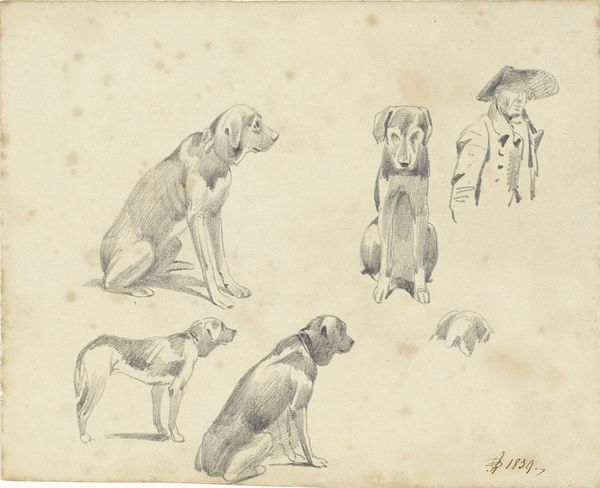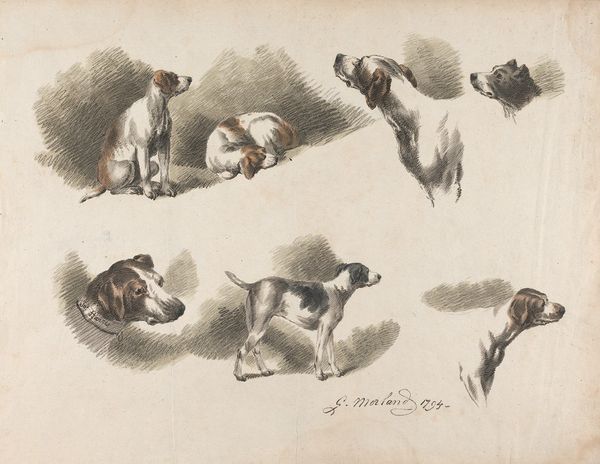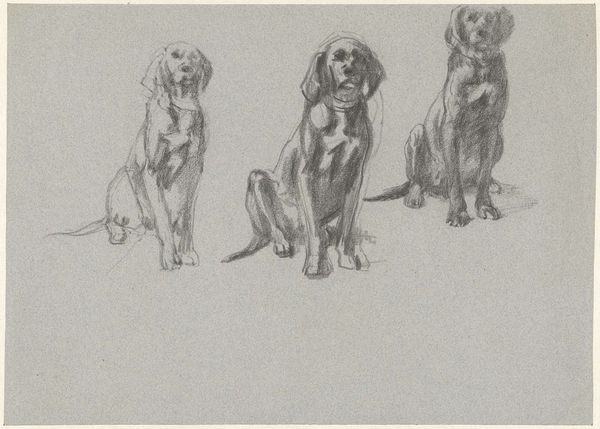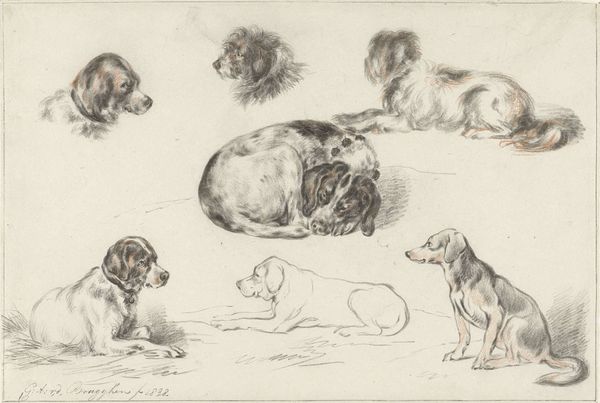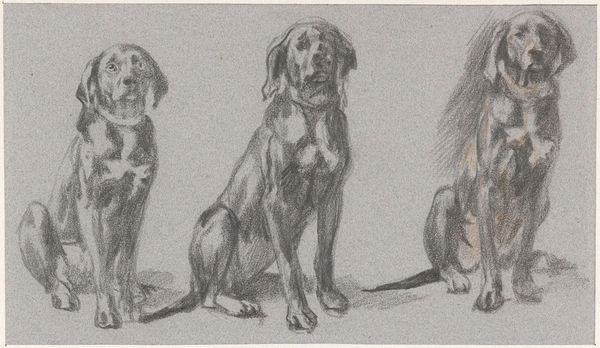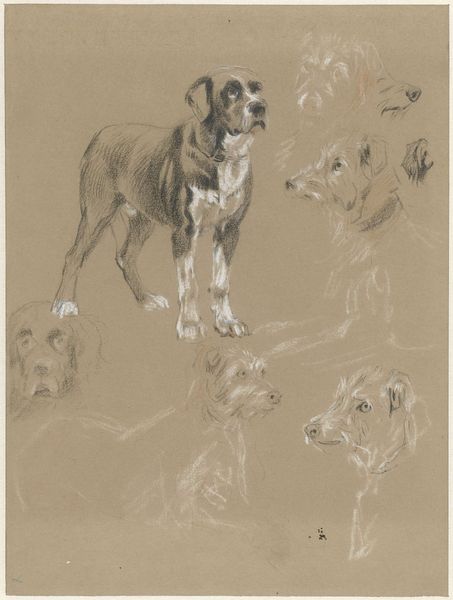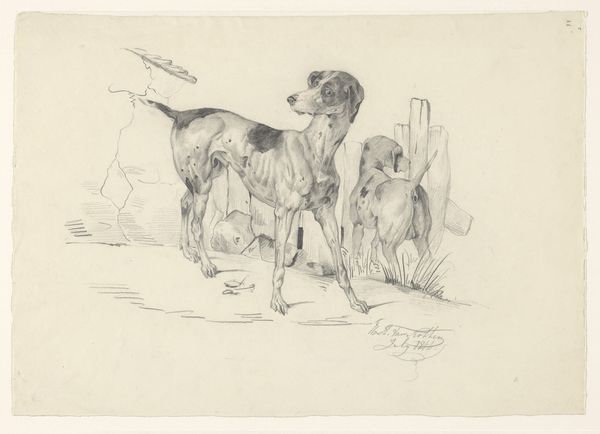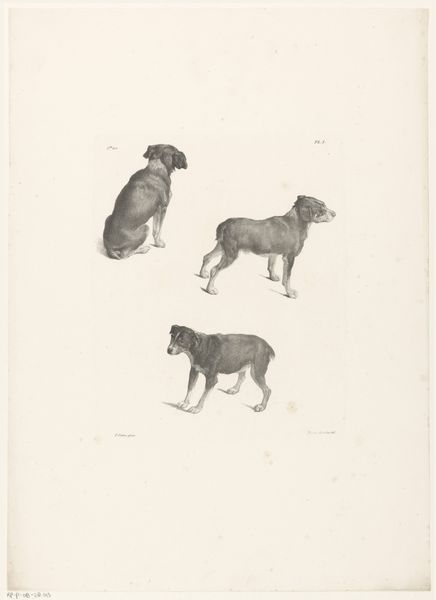
drawing, pencil
#
drawing
#
imaginative character sketch
#
light pencil work
#
quirky sketch
#
pencil sketch
#
dog
#
personal sketchbook
#
idea generation sketch
#
character sketch
#
pencil
#
sketchbook drawing
#
pencil work
#
genre-painting
#
fantasy sketch
#
realism
Dimensions: height 211 mm, width 267 mm
Copyright: Rijks Museum: Open Domain
Editor: This drawing, "Studies van een hondenkar en een hond," by Willem Pieter Hoevenaar, made sometime between 1818 and 1863, features a boy in a dog cart surrounded by studies of dogs. It feels so informal and light. What do you see in this piece, from your perspective? Curator: I see layers of societal echoes embedded within this unassuming sketch. The dog, often a symbol of loyalty and servitude, is here literally harnessed, pulling a cart. But look closer—the boy's relaxed posture contrasts sharply with the dogs’ burdened state, echoing potential class disparities. Editor: Class disparities in a dog sketch? I hadn't considered that. Curator: Consider how animals are used to signify social roles and moral character. Doesn't the use of dogs for labor stir emotions around duty, or perhaps even exploitation? What kind of person would depend upon a dog like this? How did the average person regard this kind of arrangement? The blank expressions on the dog’s faces could represent how little concern their emotional or physical state was to the society of the time. Editor: That’s a powerful reading. I was initially charmed by the sketch-like quality, but now I can see a much deeper layer of commentary. Curator: These everyday scenes were loaded with unspoken rules and values. Even now, thinking about those associations influences our experience of the drawing, consciously or unconsciously. It invites reflection on our historical relationships with animals, labor, and social power. Editor: I’ll never look at a drawing of a dog quite the same way again! Thanks for illuminating those hidden symbols.
Comments
No comments
Be the first to comment and join the conversation on the ultimate creative platform.
